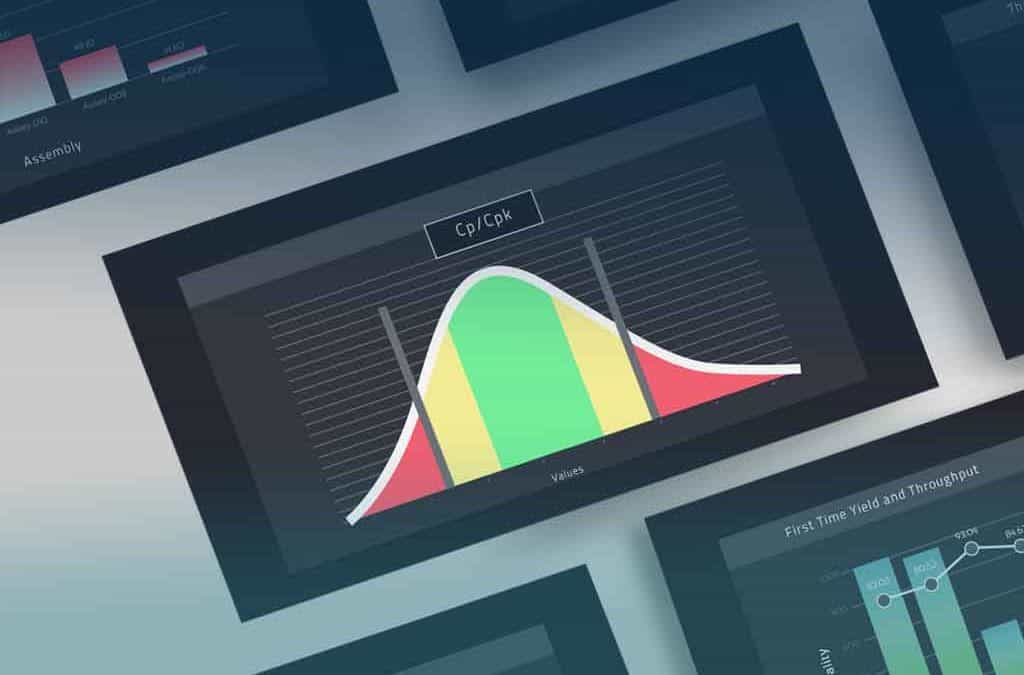Process Capability and Cp / Cpk Simulator
| Average | St.Dev | |||
| Low Limit | Hi Limit |
What does CP and CPK mean?
Cp/Cpk are 2 statistical parameters that help us get a very good indicator of the stability and of our manufacturing process.
How can we perform a Root Cause Analysis using Cp/Cpk parameters?
In short, the main 2 ideas here are measuring the variation of our processes (the smaller the better) and how centered the processes are (How close the mean is to the central line between the upper and lower limits defined for each process)
Cp stands for Process Capability. A direct way to measure and make an analysis of the process capability. It measures how close your process is to the defined upper and lower limits, compared to a reference optimal process. The larger the Cp index is, the less likely it is that any unit manufactured in your process will be outside the defined limits.
Cpk stands for the Index. It is the same as Cp but adjusted to measure a process which is analysed with a non-centered distribution. Cpk measures how close you are to the optimal area of your process and how consistent your process is.
The larger the Cpk index of your process is, the less likely it is that any unit manufactured in your process will be outside the defined limits.
Guarantee of quality control in manufacturing using Cp/Cpk
Your process performs with minimum variation, but it can be away from the optimal target towards one of the defined High or Low limits. This indicates a high index of Cp whereas Cpk will be low. On the other hand, your process may be on average exactly at the optimal target, but the variation level is high. In this scenario, Cpk will also be lower, but Cp will be high. Cpk will be higher only when your process meets the optimal target consistently with minimum variation and maximum quality control in manufacturing.
Here is a “real-life” example of using Cp,/Cpk of a manufacturing line of digital cameras:
- The operating temperature of the camera should be between -10°C and 45°C when it is delivered to customers.
- The testing process that is been used to measure the operating
temperature during the manufacturing process has a process
standard deviation of 3°C. - The average temperature (mean value) is 28°C .
- The high limit (Upper Specification Limit) is 45°C.
- Low limit (Lower Specification Limit) = -10°C
What is the of the process?
In order to answer this question, we’ll need to insert your numbers in the above simulator and check what are the process capabilities results. As you can see, the distribution is not centralized and therefore the manufacturing process of our digital camera is not stable enough and may cause quality issues. It means that we need to either change something in the camera or in the process to better centralize it (could be different components, change the technical design, etc.)
Quality control in manufacturing
Smart manufacturing technologies enhance the manufacturing process continuously collecting your data in real-time to achieve and maintain quality performance.
Our clients report an average of 30% increase in quality and yield in the first year of use.
How does it work?
QualityLine automatically creates an analytics and interactive dashboard system that automatically predicts and sends alerts for any anomaly detection to prevent degradation in the manufacturing process.
Our remote let you gain full end-to-end transparency over the whole manufacturing cycle with accurate information about each unit tested. An automated root cause analysis will reduce manufacturing waste and reduce failure rate, improving your production efficiency and quality.



